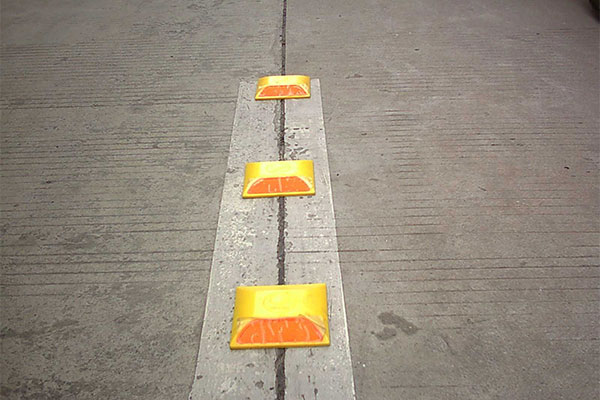Road Studs: Everything You Need to Know
When we hit the road, whether during the day or night, road safety should be our top priority. One of the often overlooked yet crucial components contributing to road safety is road studs. These unassuming devices play a significant role in guiding drivers, enhancing visibility, and ultimately reducing accidents on our highways and byways.

What are Road Studs?
Road studs, also known as cat’s eyes or retro-reflective pavement markers, are small, raised markers placed on roadways to help drivers navigate safely, especially in adverse weather conditions or low-light environments. They are primarily used to provide guidance and improve road visibility at night or in conditions of reduced visibility due to rain, fog, or darkness.
Types of Road Studs
Road studs come in various types, each serving specific purposes and providing different benefits. The most common types of road studs include:
1. Ceramic Road Studs
Ceramic road studs are one of the traditional types of road studs. They consist of a ceramic or glass shell with a reflective material inside. These studs reflect headlights, making them visible to drivers from a distance. However, they can be less durable than some newer alternatives.
2. Plastic Road Studs
Plastic road studs are often used due to their durability and cost-effectiveness. These studs are made of high-quality plastic materials with reflective properties. They are easy to install and require minimal maintenance.
3. Solar Road Studs
Solar road studs are an innovative and eco-friendly solution. These studs incorporate solar panels and LEDs, which are charged during the day and emit a bright light at night. Solar road studs are energy-efficient and reduce the environmental impact of road lighting.
4. Aluminum Road Studs
Aluminum road studs are robust and long-lasting. They are commonly used in high-traffic areas and provide excellent visibility due to their reflective properties.
How Do Road Studs Work?
Road studs work on a simple yet effective principle known as retroreflection. Retroreflection is the process by which light is directed back towards its source. In the case of road studs, this means that when a vehicle’s headlights shine on a road stud, the light is reflected back towards the driver’s eyes, making the stud visible even from a distance.
Why Are Road Studs Essential for Road Safety?
Road studs play a crucial role in enhancing road safety for several reasons:
- Improved Visibility: During adverse weather conditions like heavy rain, fog, or snow, road studs enhance visibility by reflecting light, helping drivers stay on the right track.
- Nighttime Guidance: In the absence of natural light, road studs provide essential guidance to drivers, preventing accidents and ensuring that lanes and road edges are clearly defined.
- Effective Traffic Management: Road studs are essential tools for managing traffic flow. They can mark lanes, indicate turns, and guide drivers through complex intersections.
- Minimal Maintenance: Many types of road studs, such as plastic and solar-powered studs, require minimal maintenance, reducing the burden on road maintenance crews.
- Eco-Friendly Solutions: Solar road studs contribute to sustainability by harnessing solar energy, reducing electricity consumption, and minimizing the carbon footprint of road lighting.
Conclusion
Road studs are unassuming but vital components of our roadways, contributing significantly to road safety and visibility. They come in various types, each designed to serve specific purposes, from simple reflective markers to advanced solar-powered solutions. By using retroreflection, road studs effectively guide drivers, even in adverse weather conditions or during the night.

